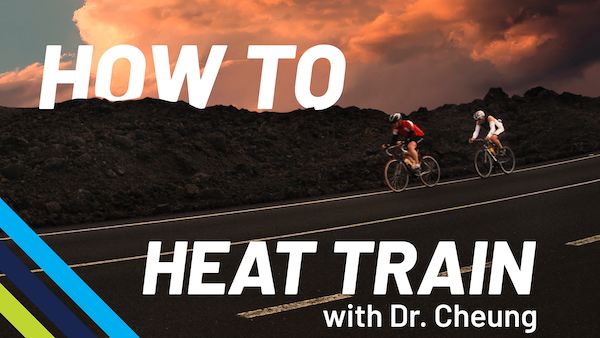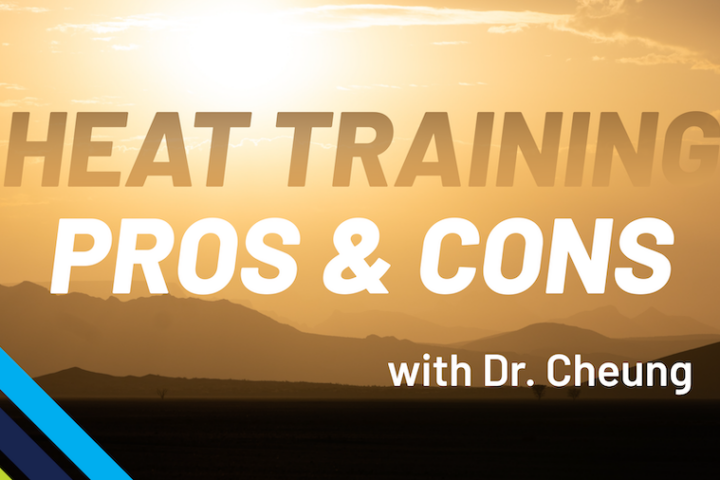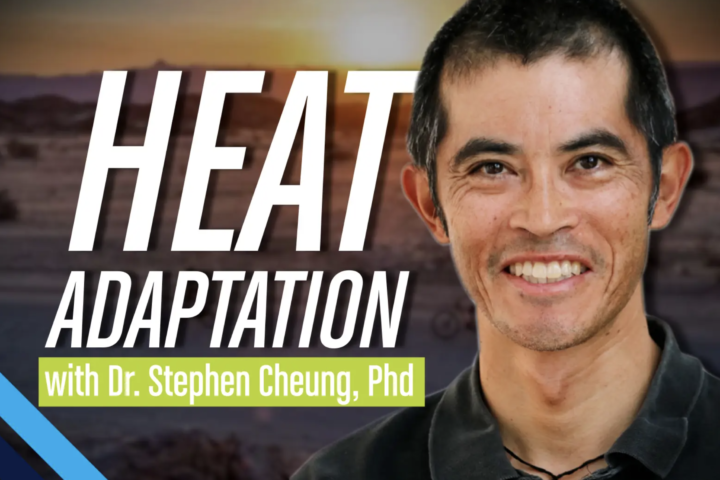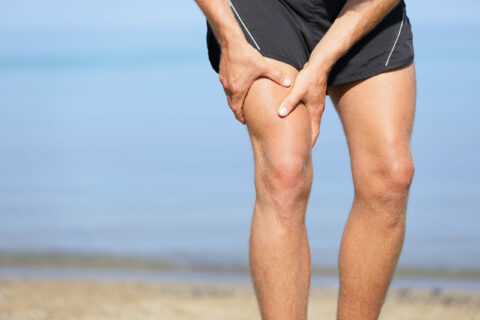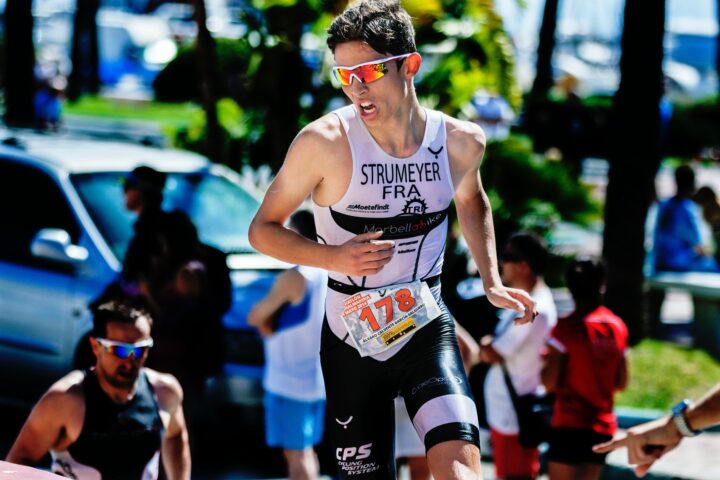Dr. Stephen Cheung is a leading researcher in environmental physiology. He has over three decades of experience studying the impact of heat on performance and health.
In this workshop, he summarizes that knowledge into a succinct and practical guide to ensure you have the best performance in the heat. He covers everything from heat adaptation methods to avoiding heat exposure; from pre-cooling to cooling during the race; from pacing strategies to setting expectations.
While this is a summary of best practices for performing in the heat, you can learn much more about the science of heat, as well as heat’s effect on performance and health in the Exercise in the Heat Pathway.
Video Transcript
Intro 00:09
Welcome to Fast Talk Laboratories, your source for the science of endurance performance.
How To Successfully Perform in the Heat
Dr. Stephen Cheung 00:20
Welcome to Fast Talk Labs, I’m Dr. Stephen Cheung, professor, and Senior Research Fellow in the Department of Kinesiology at Brock University in Canada. Today, I want to go through the major steps you can take to ensure that you perform as strongly as possible during competitions in hot weather. We’ve covered many of the topics in detail in other workshops, but today, we’ll try to put it all together with practical steps and actions.
Systematically Adapting To Heat Before a Race
Dr. Stephen Cheung 00:48
The first step in preparing for heat is to systematically adapt to heat beforehand. You can do a lot of fancy things on the day of like wearing ice fast while warming up or drinking cold slushies. But nothing is going to systematically benefit you as much as a well-planned heat adaptation protocol. A thing of heat adaptation like your massive endurance base that you need to build for cycling before layering intervals on top. In the same way, what do you do the day of won’t mask deficiencies in your heat adaptation, you can check out my workshop on heat adaptation to get much more information on its practical implementation.
Why Is Heat Adaptation Important?
Dr. Stephen Cheung 01:30
Why do I feel that heat adaptation is so critical? Let’s take a look at this field study by a Danish Qatari collaboration, that really highlights the impact of heat stress, and also the power of adaptation. What they did was have well-trained Danish cyclists perform a 43-kilometer outdoor time trial in Denmark in weather that was five degrees Celsius. Then they flew to Qatar for a two-week heat training camp, and there, they did a 43-kilometer outdoor time trial, obviously on a different circuit than back in Denmark, after 1, 6, and 13 days, the power output of the Danish baseline time trial is set as 100% on the vertical axis on this graph. Really important here is what happened on day one in Qatar, compared to baseline performance dropped down to 85%, that’s an incredible drop in capacity and highlights how far you’re off the back if you do not prepare for the heat. But the good news comes as you move right on the graph, after six days, the performance improved to about 92% of baseline, and after two weeks, it almost returned to baseline at about 97%. So, overall, this clearly highlights that your performance will be impaired in heat if you’re not prepared, but that your performance can be restored to near normal with a program of heat adaptation.
Avoiding Unnecessary Heat Exposure
Dr. Stephen Cheung 03:03
Step two for racing in the heat is to stay out of the sun and avoid unnecessary heat exposure. It sounds common sense and almost simplistic, but so many athletes travel to their big competition, get all excited by being in a new place and seeing their friends again, and then decide to do some sightseeing or hang out together in the days before. Obviously, the social environment is a big part of why we ride and race, but you don’t want to risk sunburn and dehydration before the competition. Anytime that you are hotter than you need to be, you’re not recovering optimally. So, focus on your race beforehand, and then go enjoy yourself afterward.
Pre-Cooling
Dr. Stephen Cheung 03:46
So, you’ve heat adapted, taken care of before race day, now what are things you can do the day of? The biggest thing you can do now is to continue to keep cool before the gun goes off, and you can systematically pre-cool with both high-tech and low-tech methods. The basic idea is that you want to keep your body temperature from rising while you’re warming up, or ideally even drop it a little bit. They’ll give your body a bigger thermal window before heat stress starts having an impact. Does pre-cooling actually work? It depends on the competitive demands.
Benefits of Pre-Cooling
Dr. Stephen Cheung 04:24
In 2015, I was part of a meta-analysis that surveyed the existing pre-cooling literature on exercise in the heat. With the 23 total studies that we looked at we see on the far left an overall benefit. However, if it is a sprint competition like a track sprint, as highlighted in the far left red circle, pre-cooling actually may have a negative impact. This fits well with the scientific consensus that strength and power are maximized with warm temperatures but moving right we see with intermittent and endurance efforts pre-cooling as a small to very strong benefit. Same thing with the far-right red circle, which shows that cooling during exercise has a moderate benefit. We’ll come back to that.
Ways to Pre-Cool Before a Race
Dr. Stephen Cheung 05:17
So, if you do pre-cooling, what are some ways to do it? One strategy is to double-dip by combining and maintaining hydration with cooling through drinking cold water or ice slushies. You can flavor or salt as needed or desired. Note that hyperhydration isn’t necessary or really beneficial, but this is the time to really focus on scheduled drinking to ensure that you’re at U-hydration or normal fluid levels before the race. Slushies are especially effective because you’re melting the ice to water sucks away a lot more heat than just drinking cold water.
Dr. Stephen Cheung 05:57
When warming up for your event, many of us use a trainer. This can both be good and also be full of pitfalls. The biggest pitfall is that you have no air movement, so heat dissipation is reduced, and you can heat up much more than warming up on the road. So, if you are using a trainer, ideally ensure you have a fan or that you are in a windy area for ventilation, and if it’s really sunny, it would be good to warm up in the shade or have some kind of tent or screen to block out the solar radiation from the sun. There are high-tech and low-tech ways to pre-cool while warming up. The high-tech ways to use an ice vest like Tony Martin is using here while warming up for the 2012 tour prologue. Although, I’d say the unit he’s using isn’t the best because of the minimal coverage over the torso. The low-tech way is to get cold and wet towels and drape them over your torso and neck while warming up on the trainer.
Planning Support and Aid Stations
Dr. Stephen Cheung 07:00
Now, it’s race time. What can you do during the race to keep cool? The biggest thing you can do during the race to keep cool is to plan your support and aid stations. If you have a feed zone and support, make sure you’re set up with coolers of cold drinks and bottles. Having lots of fluids available mean that you can both keep hydrated and have the option of pouring water over yourself to keep your thermal discomfort down and help with evaporative heat loss. If you do have plenty of access to fluids, then make sure you drink early and often, that’s because both hard exercise and heat stress reduces gut blood flow, so gastric emptying and intestinal absorption slows down a lot for both fluids and food.
Adjusting Your Pacing During the Race
Dr. Stephen Cheung 07:50
The final thing you can do during the competition is to adjust your pacing. We saw earlier that even when heat adapted, performance is reduced in the heat compared to cooler temperatures. So, we need to adjust their pacing and also our mental expectations to accommodate. Let’s take a look at an excellent example of pacing in action. This was Canadian race walker, Evan Dunfee, at the 50-kilometer event at the 2019 World Championships in Qatar. In the blue is his pace, in green is his heart rate, and in orange his core temperature. He and his team meticulously planned his pacing and modeled his optimal pacing based on a range of potential temperatures and humidity. So, look at the blue line or his pacing. Evan held back and held back while a lot of his competitors went out hot, which required a lot of discipline and confidence. Then he really poured it on over the final 15-kilometer where he caught a lot of competitors and ended up winning bronze. Also look at his core temperature, because he didn’t pace too quickly, his core was high at 38.5 degrees Celsius, but kept steady over the first 35- kilometers. This gave him a lot of thermal window or capacity when he did decide to up the pace and rose to 40 degrees Celsius at the finish. Note that Evan did a quality heat adaptation program before, and also meticulously planned pre-cooling and per-cooling throughout. The race was held in extreme heat and I think the big takeaway is that while absolute performance may suffer, you can still perform well in hot weather, and that is something to plan for rather than fear.
Dr. Stephen Cheung 09:47
So, let’s summarize what I consider to be the five key steps in handling the heat. First and foremost, heat adapt beforehand. Looking at the 2016 cycling worlds and 2019 Track and Field champs in Qatar, the survey results are mind-boggling the low percentage of these world-class athletes who actually did heat adaptation beforehand, and this is despite knowing years ahead of time that they’ll be competing in a very hot environment.
Dr. Stephen Cheung 10:17
Step two is to focus on the event, first, stay out of the sun, and then go enjoy yourself afterward. Then, you can effectively perform pre-cooling and per-cooling, even with pretty low-tech methods of ice slushies, wet towels, and being prepared at eight stations. Finally, prepare your pacing and also manage your expectations about what you can and can’t do in the heat. Here are the references to the studies that I’ve discussed in this workshop. What’s been your experiences with preparing for racing in the heat? Have you had great races? Have you had bad races? What are your war stories? Join our conversations in the forum’s feature of Fast Talk Labs. I’m Dr. Steven Cheung, and even though this is somewhat of a wrap-up, we’ll continue to develop more content on how he affects us and how we can manage it. Thanks for watching. See you next time.

